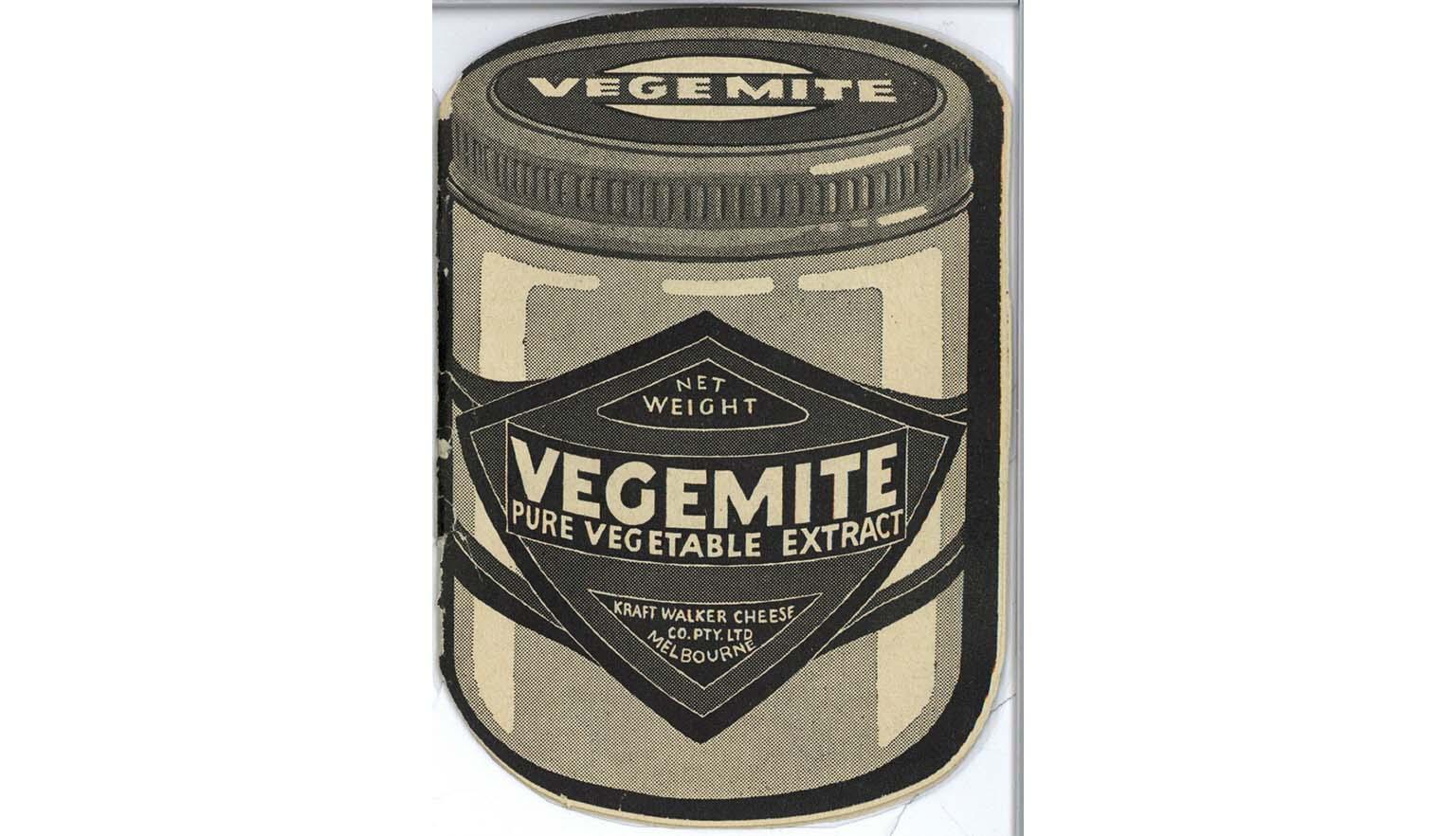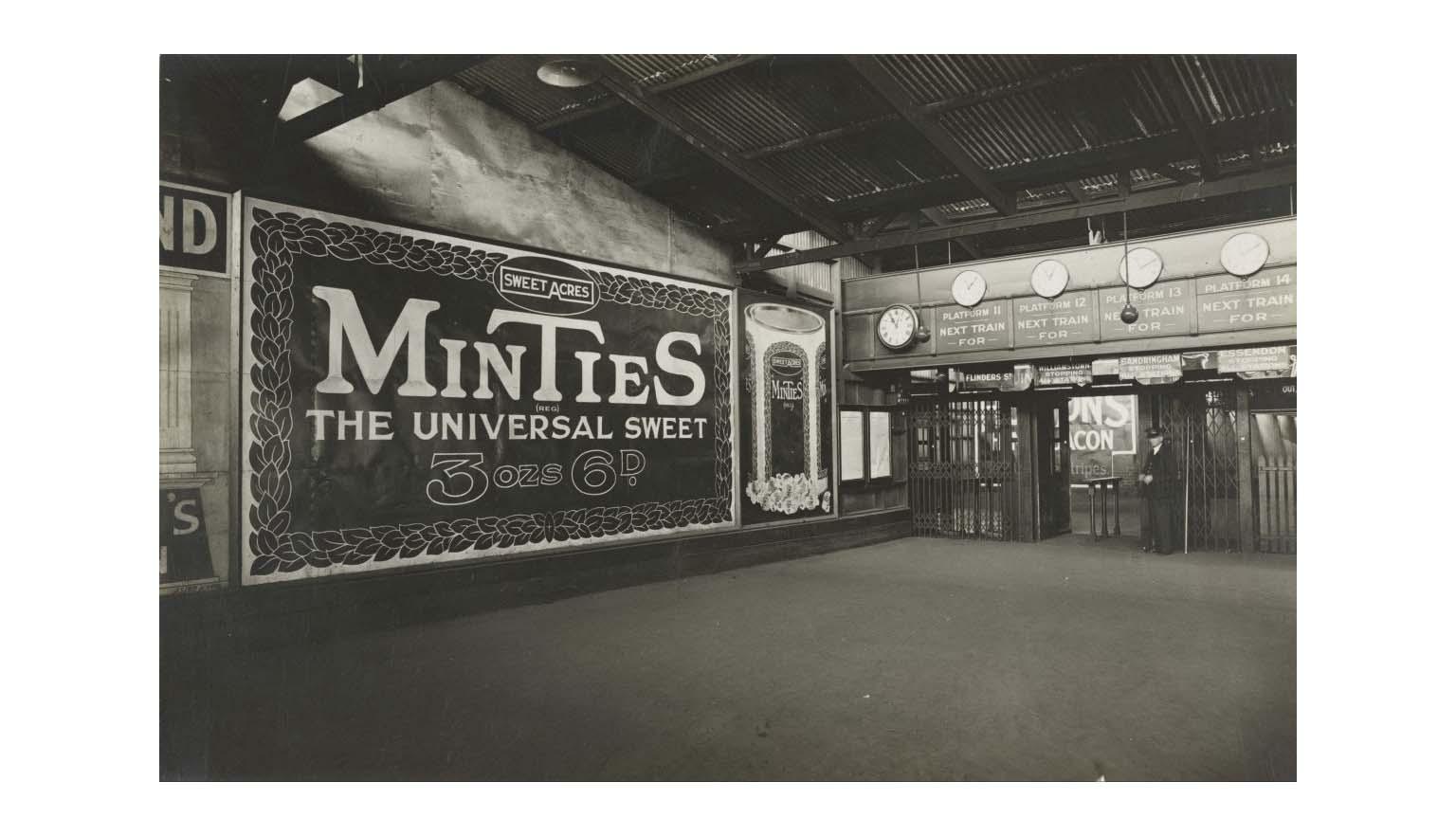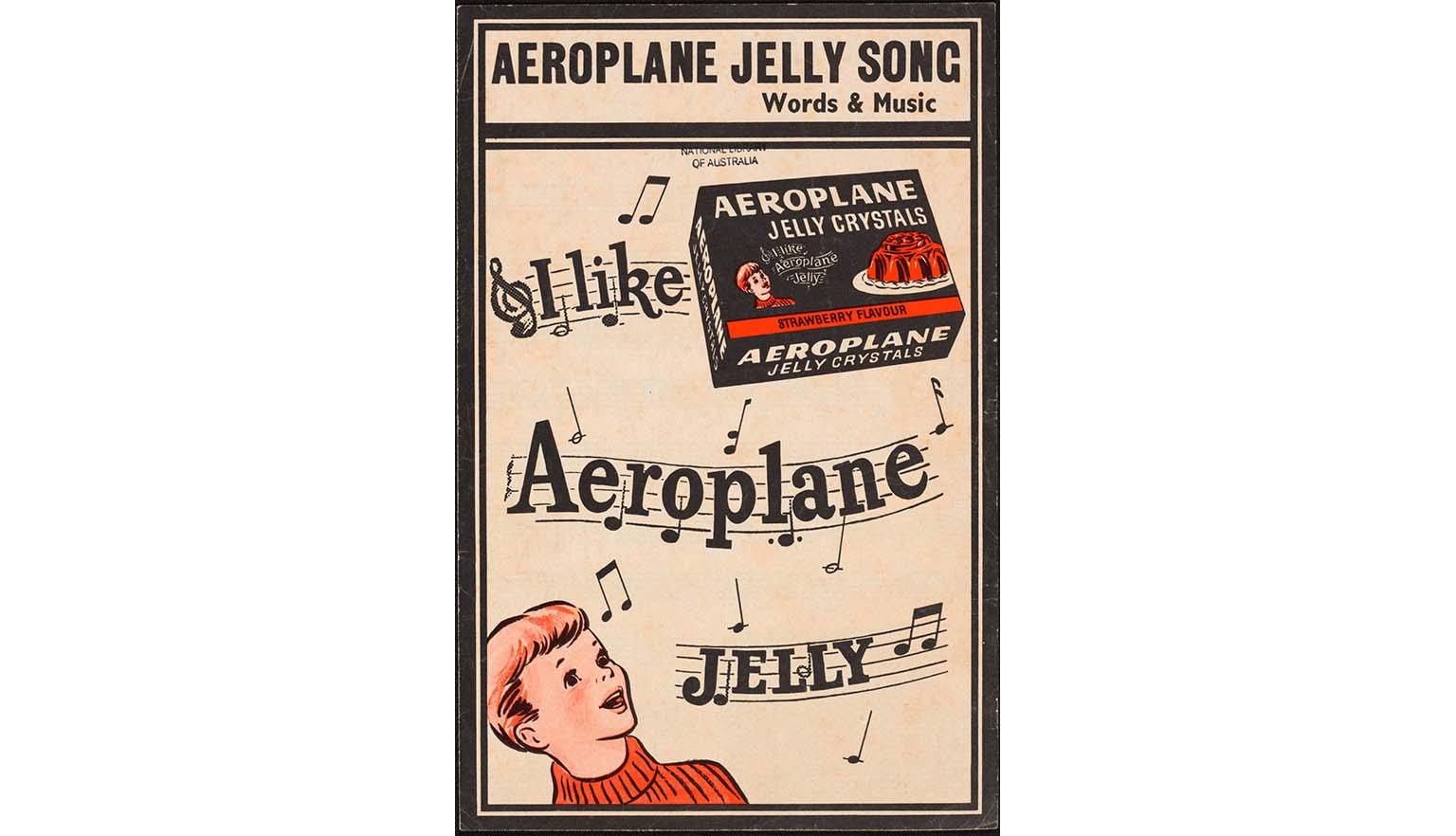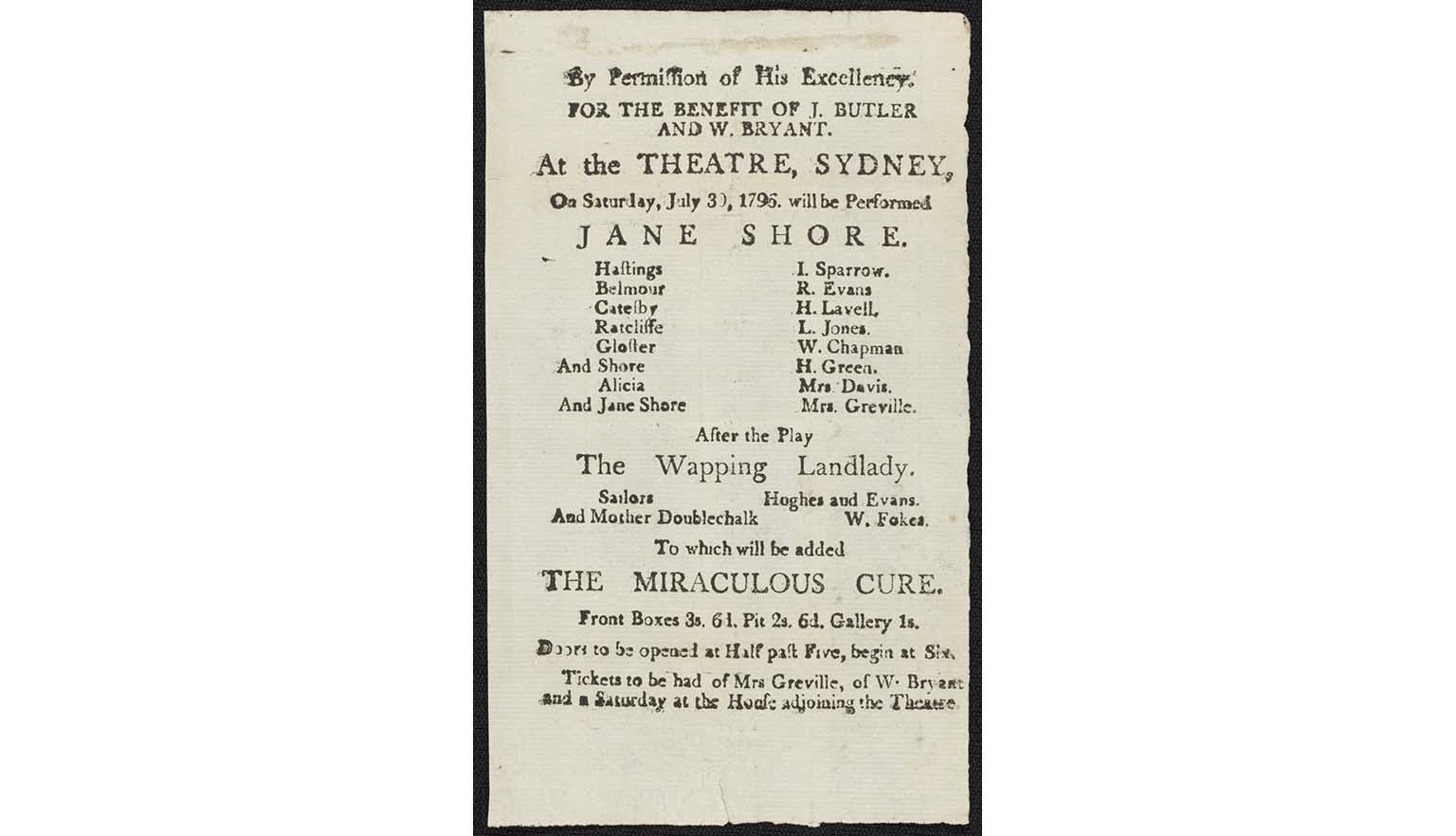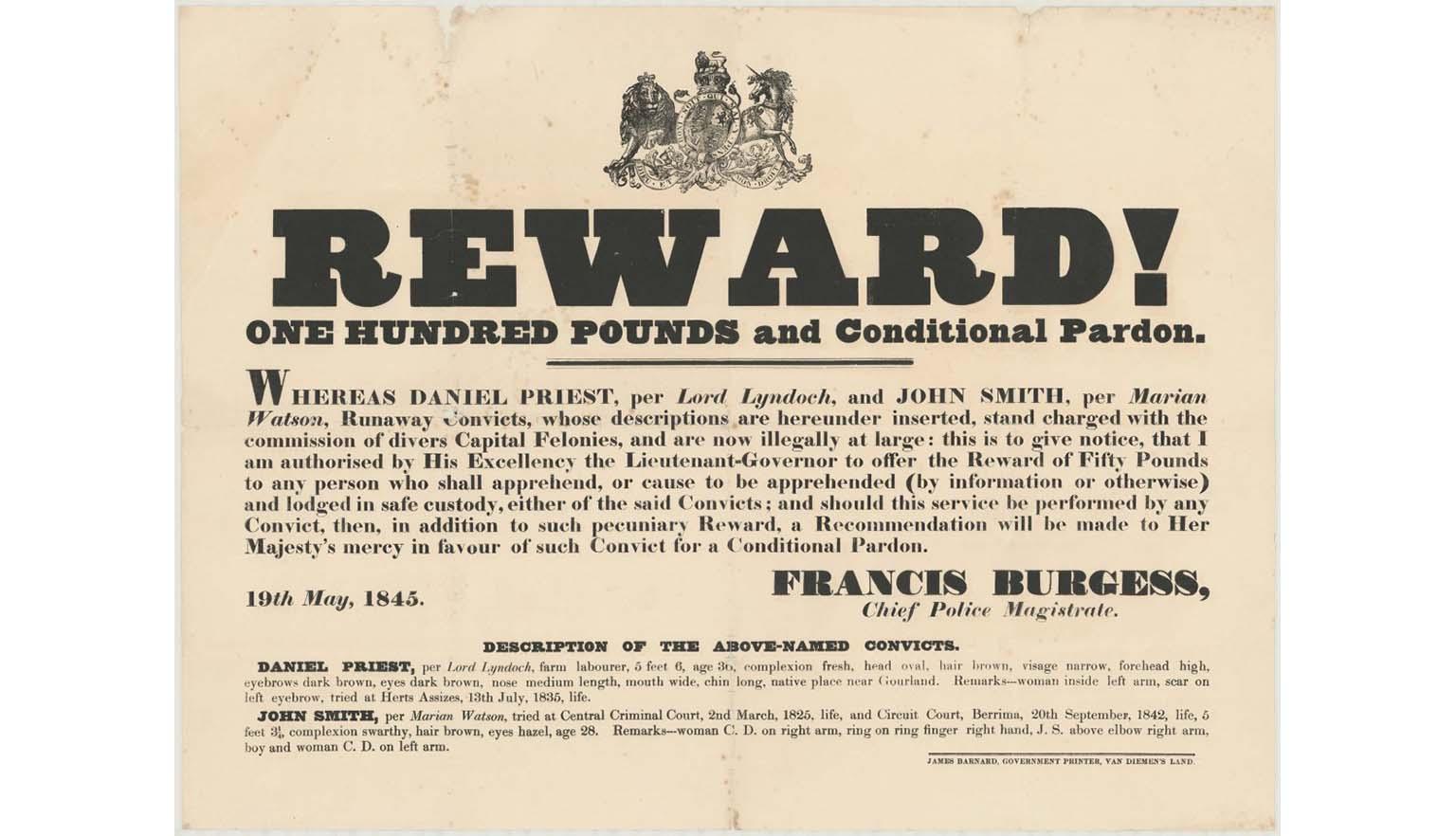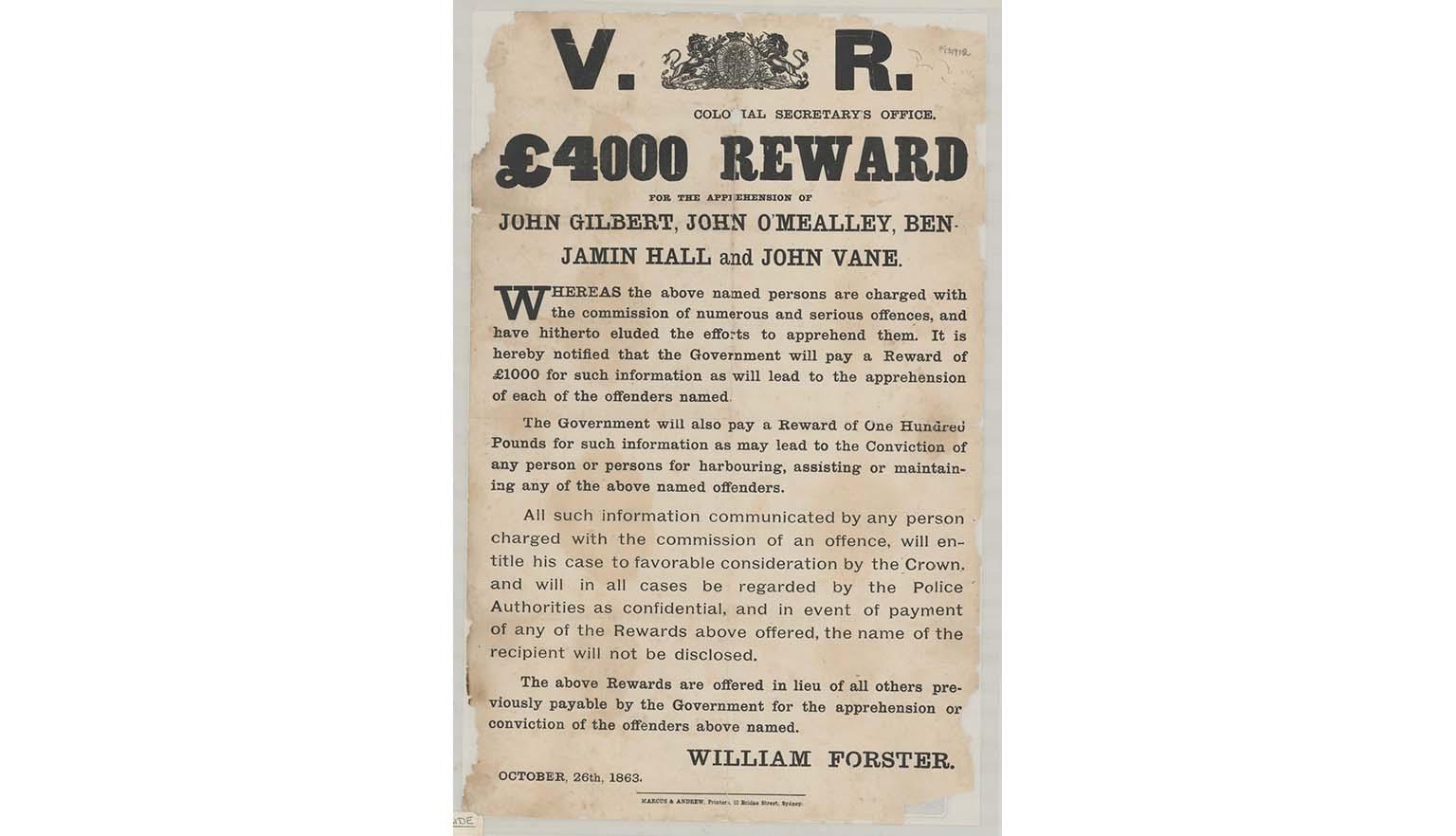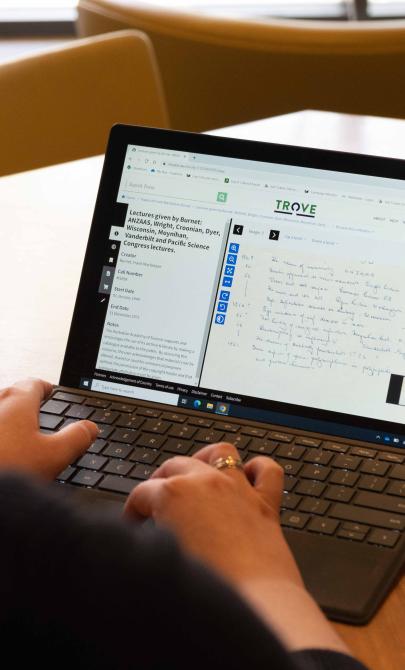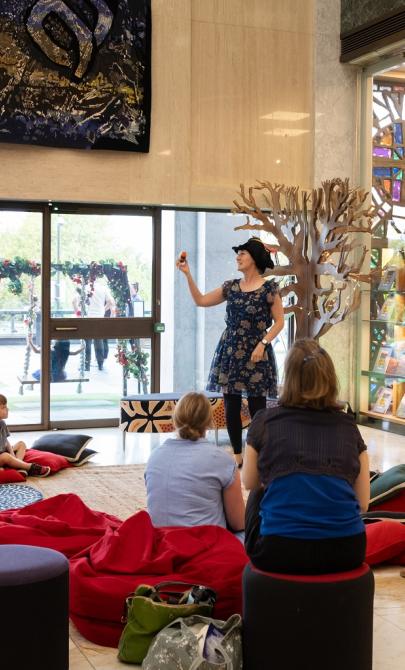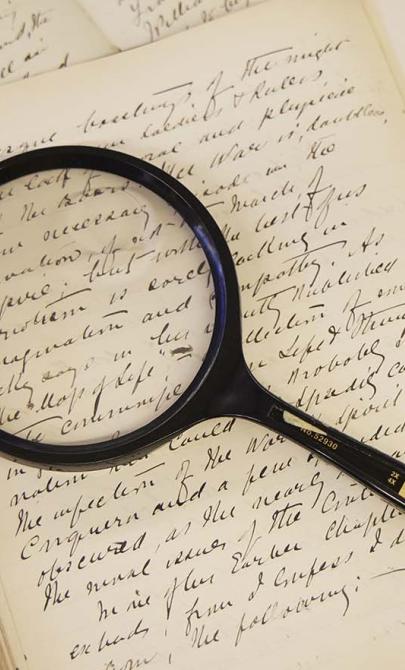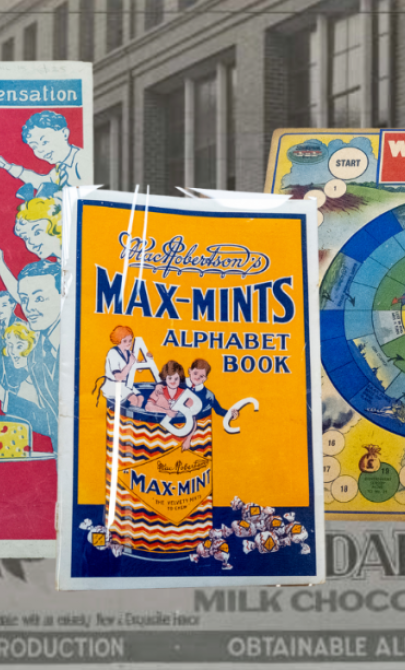Iconic brands and early ads
Iconic brands
'Arnott's little moments'
Founded in Newcastle in 1865 by William Arnott and still in operation, though now foreign-owned, Arnotts’ has used many slogans over its 151-year history, but a constant has been the parrot. The story goes that William Arnott was given a Mexican parrot by a ship’s captain. His daughter-in-law, Leslie, drew it while it was sitting on a pole eating a biscuit. (The bird died in 1918.) The parrot was registered as a logo in 1888 and trademarked in 1907.
This fan is thought to date from the 1920s and 1930s. It advertises SAO biscuits, a plain cracker biscuit introduced in 1906 and an Arnotts’ bestseller, particularly early in the twentieth century.
‘Many ways with Vegemite’
Vegemite, the iconic dark-brown yeast extract high in vitamin B, came out in 1923.
This vegemite recipe book is likely the one that was advertised in The Australian Women’s Weekly between July and December 1939, targeting mothers: ‘Your Baby Needs the 3 Vital Vitamins’. The article encouraged readers to send for the recipe book.
‘I like Aeroplane Jelly, Aeroplane Jelly for me!’
The Aeroplane Jelly jingle is undoubtedly one of the most lasting and successful Australian advertising jingles. It was first played on Sydney radio station 2KY in early 1930.
This sheet music was published after 1953. We know this because its reverse advertises calorie-controlled jelly, which was introduced then. The cover features a rendering of Tommy Dawes, also known as ‘the whistling boy’, from the early television commercial. He was on Aeroplane Jelly packaging throughout much of the twentieth century.
‘It’s moments like these’
Few advertising slogans have been as successful or as long-lasting as the one for the chewable mint sweet, Minties. Invented by Australian James Steadman and sold under the SweetAcres brand, Minties came out in September 1922, was patented in 1926 and its iconic ‘It’s moments like these’ advertisements came out that same year.
This railway advertisement is from 1925 and so is missing the famous tag line, but the logo - ‘Minties’ - is still recognisable today.
Activity 1: Investigate multimodal texts
These advertising campaigns were for iconic Australian brands. Share the Trove lists below and have students explore the advertising materials for these brands.
- The Sell: Australian Advertising 1790s to 1990s - Arnott's Biscuits
- The Sell: Australian Advertising 1790s to 1990s - Vegemite
- The Sell: Australian Advertising 1790s to 1990s - Minties
Activity 2: Analyse brand identities
In small groups, have students examine the following:
- What makes these advertisements memorable?
- What visual and design elements stand out?
- How do these elements guide the viewer’s attention?
- What symbolic meanings do some of the elements carry?
- What messages do advertisers want consumers to believe about the product?
Activity 3: Compare past and present advertising
The brands of Arnotts’, Vegemite and Minties all still exist today, although some are foreign owned. As a class, discuss how the logos and advertising campaigns of Arnott’s, Vegemite, and Minties have changed over time. Consider:
- What are some reasons for these changes?
- What elements, if any, have remained the same? Why?
Early ads
Australia’s earliest existing printed advertisement
This playbill advertises an evening’s entertainment at Sydney’s first purpose-built theatre. The layout is typical of eighteenth-century London theatre playbills, and dates back to Shakespeare, a playwright that the colonists knew well. Most of the actors were literate convicts. There are collectors who collect playbills and this example had passed through several owners before being rediscovered unexpectedly in 2007 in Library and Archives Canada.
‘Wanted’ posters
Broadsides—large notices with text—were a key means of public communication and control. This ‘wanted’ poster uses typography effectively, featuring a bold ‘fat face’ type introduced in England in 1803 by Robert Thorne. The coat of arms signifies government authority, while the size of the word ‘REWARD’ reflects its target audience—convicts—who were offered both money and potential freedom in return for information.
The second broadside calls for the capture of bushranger Ben Hall (1837–1865) and his gang. The largest font is reserved for ‘V[ictoria] R[egina]’—a reference to Queen Victoria. The use of multiple fonts and the awkward line break in ‘Benjamin’ would not be considered good design today. Similar notices appeared in government gazettes and newspapers in 1863, with the reward increasing from £2,500 to £4,000 in just days. Gang member John O’Meally was shot dead on 19 November 1863 by a local resident, who claimed a £1,000 reward.
Handbills—also known as flyers or leaflets—were small printed messages designed for mass distribution, whereas broadsides were single large sheets meant to capture public attention quickly.
These advertisements—playbills and ‘wanted’ posters—had different purposes, but they followed design conventions that are still recognisable in modern advertising.
Activity 4: Explore playbills across time
Half the class can research advertisements for theatrical performances from the 1790s to today using the National Library’s PROMPT sequence of performing arts ephemera.
- What are some enduring layout features of this type of advertising?
- What information is absolutely essential to include?
- Why would the colonists who were staging the performance at the Theatre, Sydney, in 1790 attempt to recreate a London playbill?
Activity 5: Investigate ‘wanted’ posters
The other half of the class can search Trove for ‘wanted’ posters from different periods using keywords such as ‘wanted’, ‘poster’, ‘reward’, ‘murder’, and ‘bushranger’.
- What are some enduring layout features of this type of advertising?
- What information is absolutely essential to include?
- Why are some elements larger than others?
- What developments in technology have improved the effectiveness of this type of advertising?
Acknowledgement
This resource has been generously supported by Optus. Through the Digital Thumbprint program and Kids Helpline @ School, Optus supports digital knowledge and the positive use of technology.
If you’d like to learn more about the Digital Thumbprint program, please visit the website or, if you’re interested in booking the program at your school, you can register your interest.



